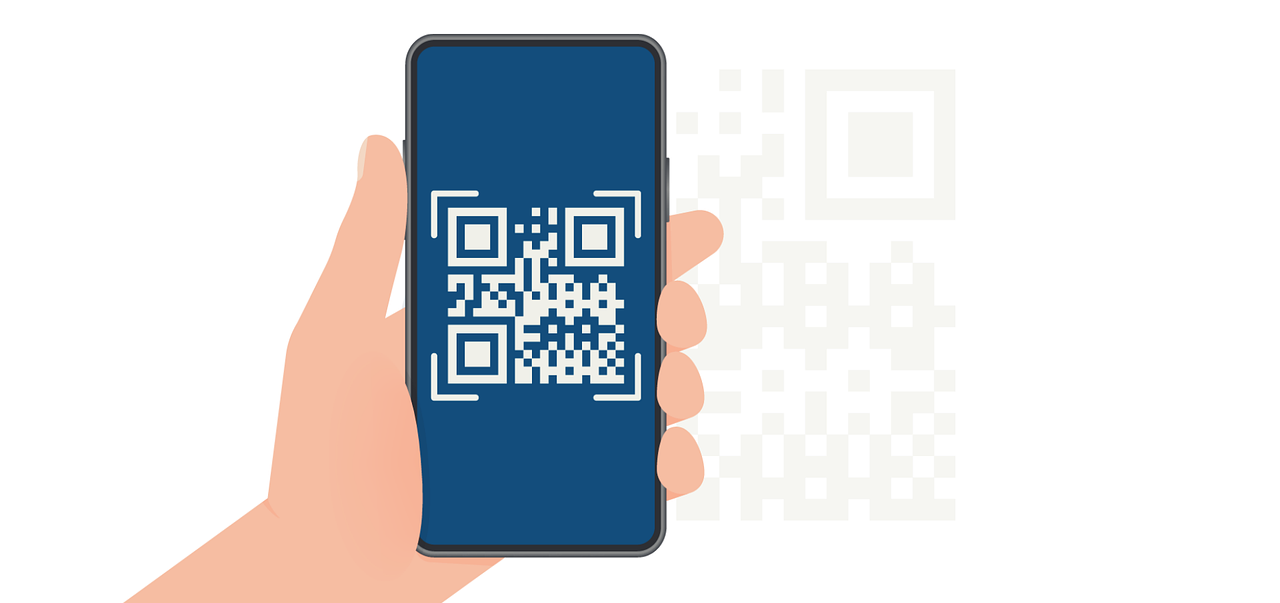Optimal email banner size for effective campaigns
Learn about the ideal email banner size and valuable design tips to increase the open and click-through rates of your newsletters and campaign.

For most email campaigns, a banner size of 600 × 200-300 pixels delivers the best results across email clients, striking the right balance between visibility and loading speed.
When it comes to email marketing, your banner is often the first visual element that catches your reader's eye. A well-designed banner doesn't just enhance your brand presence. It can significantly boost engagement metrics and drive action. But getting the dimensions right is crucial for professional results. In this guide, we'll explore everything from standard sizing recommendations to responsive design principles that ensure your banners look exceptional on every device and email client.
Why Banner Size Matters More Than You Might Think
Your email banner dimensions affect much more than aesthetics. The right size directly influences how quickly your email loads, how well your message comes across, and ultimately how your subscribers engage with your content.
Oversized banners create frustrating load times, particularly for recipients on mobile data connections or slower networks. This delay can lead to impatient subscribers abandoning your email before your message even registers. Conversely, banners that are too small may appear unprofessional, with text becoming difficult to read or images looking grainy on high-resolution displays.
This consideration becomes especially important in professional environments where emails might be viewed primarily in Outlook or similar desktop clients, but also checked on mobile during commutes or between meetings. Your banner needs to transition smoothly between these contexts without losing impact.
Beyond user experience, banner size affects deliverability. Emails with excessive image file sizes may trigger spam filters or land in promotional tabs instead of the primary inbox. Every pixel and kilobyte matters when you're competing for attention in crowded inboxes.
Industry-Standard Banner Dimensions That Work Everywhere
Through years of testing and optimization, email marketers have established reliable standards that ensure maximum compatibility across platforms. Here's what works best:
Why 600 Pixels Has Become the Gold Standard
The 600-pixel width has emerged as the industry benchmark for a simple reason: it displays perfectly within the preview pane of virtually all desktop email clients while still looking great on mobile. This width prevents horizontal scrolling, a major friction point that frustrates readers.
For height, the sweet spot falls between 200-300 pixels. This range gives you enough vertical space to include your logo, a concise headline, and a clear call-to-action without dominating the entire screen when the email first opens. Your recipients should see both your banner and the beginning of your content without needing to scroll.
Outlook-Specific Considerations: Making Your Banners Work in Corporate Environments
Microsoft Outlook remains the dominant email client in business settings, yet it handles images differently than webmail providers like Gmail. Understanding these quirks helps ensure your banners display correctly for corporate recipients.
When designing specifically for Outlook audiences:
- Maintain the 600-pixel width, but consider keeping your banner height closer to 200 pixels for more consistent rendering across various Outlook versions
- Choose JPEG format for photographic images and PNG for graphics with solid colors or transparency needs
- Avoid using GIFs for critical information, as animation support varies between Outlook versions
- Keep file sizes under 500KB to prevent triggering download prompts and ensure quick loading
Testing is essential here. What looks perfect in your design software might display differently in Outlook 2016 versus Outlook 365. Always send test emails to accounts using different Outlook versions before finalizing your campaign.
Pixel Precision: Technical Specifications for Designers
When working with your design team or creating banners yourself, these specific pixel measurements will help ensure professional results:
- Width should be exactly 600 pixels to fit standard email templates
- Height can range from 200-300 pixels depending on your content needs
- Resolution should be 72 DPI (standard screen resolution)
- Maximum file size should stay below 500KB, with 200-300KB being ideal for speedy loading
By sticking to these specifications, you'll create banners that maintain their visual integrity across different screen sizes and resolutions, from large desktop monitors to compact smartphone displays.
Mobile Optimization: Ensuring Your Banners Shine on Every Device
With mobile email opens accounting for 60% or more of total engagement for many campaigns, responsive design isn't optional, it's essential. Creating banners that adapt gracefully to different screen sizes ensures your brand looks professional everywhere.
To create truly responsive banners:
- Use percentage-based widths in your email HTML, typically setting the container to 100% width with a maximum of 600 pixels
- Optimize image compression to reduce file size without sacrificing quality using specialized tools
- Implement proper alt text that accurately describes your banner for situations where images don't load or for visually impaired recipients
- Consider content hierarchy and ensure key messages are visible without zooming or horizontal scrolling
For particularly important campaigns, consider creating a dedicated mobile version of your banner with simplified elements and larger text. Many email platforms now allow you to specify different images for desktop versus mobile views.
If you're looking for an intuitive solution to help you design responsive banners seamlessly, the email builder from Expressa can streamline this process and ensure your designs shine across devices.
Common Banner Mistakes and How to Avoid Them
Even experienced marketers sometimes fall into predictable traps when designing email banners. Here are the most frequent issues and their solutions:
- Creating banners wider than 600 pixels: This forces many email clients to scale down images, often resulting in blurry text or distorted visuals. Always design within standard width constraints.
- Relying entirely on image-based text: If your recipient has images disabled (common in many corporate environments), your message disappears entirely. Always include your key message in the actual email text as well.
- Forgetting alt text: When images don't load, alt text ensures your message still gets through. It's also essential for accessibility compliance.
- Using low-contrast designs: Subtle color differences might look elegant in your design software but can become illegible on different screens and in varying lighting conditions.
- Neglecting file optimization: Uncompressed images lead to slower loading times and potential deliverability issues. Always optimize before uploading.
By avoiding these common pitfalls, you'll create more effective banners that actually reach your audience as intended.
Design Strategies for Better-Performing Banners
While size and technical specifications create the foundation, thoughtful design ultimately determines how effectively your banner drives action. These design principles consistently produce better results:
- Balance simplicity with impact: Resist the urge to overcomplicate. A clean design with one clear message typically outperforms busier alternatives.
- Create visual hierarchy: Guide the reader's eye through your banner with intentional use of size, color, and spacing. The most important element should stand out immediately.
- Maintain brand consistency: Your email banner should feel like a natural extension of your website, social media, and other branded materials. Use consistent colors, typography, and visual language.
- Design for scanning: Most recipients will view your banner for just seconds. Ensure the core message comes across instantly, even at a glance.
- Test different approaches: What works for one audience might not work for another. Run A/B tests with different designs to identify what resonates best with your specific subscribers.
Remember that effective banner design balances aesthetics with practical marketing objectives. Looking good matters, but driving action matters more.
Real-World Banner Examples That Drive Results
To help visualize these principles in action, here are several practical banner applications that consistently perform well:
- Product Launch Banner: 600 × 250 pixels with product image on the left, three key benefits listed on the right, and a prominent "Learn More" button with contrasting color.
- Limited-Time Promotion: 600 × 200 pixels using urgency-driven language and a countdown element to create time pressure, with discount percentage prominently displayed.
- Content Newsletter: 600 × 180 pixels with a clean, editorial-style layout featuring the newsletter name, issue number, and date for easy archiving and reference.
- Event Invitation: 600 × 300 pixels with location photography as background, event name and date overlay with semi-transparent color block to ensure text legibility.
If you want to pair your banners with downloadable event invites or content, consider utilizing a PDF builder to create branded PDFs that align with your email visuals.
Each of these examples serves a specific marketing purpose while maintaining the technical standards that ensure proper display across platforms.
Legal Considerations and Accessibility Requirements
Beyond design and technical specifications, you need to ensure your email banners meet legal and accessibility standards. Those are requirements that are increasingly important for business communications.
For legal compliance:
- Ensure any promotional claims in your banner can be substantiated
- Include necessary disclaimers if your banner contains time-sensitive or regulated content (especially important for financial services and healthcare)
- Verify that any personalization elements comply with relevant privacy regulations like GDPR or CCPA
For accessibility:
- Provide descriptive alt text that conveys both the content and function of your banner
- Maintain sufficient color contrast ratios (at least 4.5:1 for normal text) to ensure readability for those with visual impairments
- Avoid relying solely on color to convey important information
These considerations aren't just about compliance, they demonstrate respect for your entire audience and protect your organization from potential liability issues.
Streamlining Banner Creation with No-Code Tools
Creating, testing, and implementing email banners can become a time-consuming process, especially for teams running multiple campaigns simultaneously. Modern no-code solutions like Expressa eliminate these bottlenecks with intuitive tools designed specifically for marketing teams.
With the right platform, you can:
- Create professional-looking banners using drag-and-drop interfaces without design software expertise
- Maintain a library of approved banner templates that can be quickly customized for different campaigns
- Preview how your banner will appear across various email clients and devices before sending
- Implement dynamic content rules that can personalize banners based on recipient data
- Track which banner designs generate the highest engagement rates
These capabilities don't just save time. They lead to better results by making testing and optimization accessible to everyone on your team, not just technical specialists.
How Expressa Makes Banner Management Simpler
While many platforms offer basic banner implementation, expressa.io provides specific features designed for teams that need consistency and efficiency in their email communications:
Additionally, if your campaigns require automated document delivery along with emails, integrations like the email API can further enhance your workflow by programmatically managing both content and banners.
These tools eliminate common friction points in the email creation process, freeing your team to focus on message and strategy rather than technical implementation details.
Conclusion: Creating Email Banners That Truly Deliver
The perfect email banner combines precise technical specifications with thoughtful design to create an immediate visual impact. By maintaining standard dimensions of 600 × 200-300 pixels, optimizing for both desktop and mobile viewing, and focusing on clear, action-oriented design, you'll create banners that enhance every campaign.
Remember that your banner is more than just decoration. It's often the first impression your message makes and can significantly influence whether recipients continue reading. Taking the time to get this element right pays dividends in improved open rates, click-throughs, and ultimately, campaign success.
Whether you're creating a product announcement, newsletter header, or promotional campaign, these guidelines will help ensure your banners look professional and drive results across all platforms and devices.
FAQ: Common Questions About Email Banner Design
What's the maximum file size for an email banner?
Keep your banner under 500KB, ideally between 200-300KB, to ensure fast loading times and prevent triggering spam filters.
Should I use JPG or PNG format for my email banners?
Use JPG for photographic images with many colors and gradients, and PNG for graphics with text, solid colors, or when you need transparency.
How do I ensure my banner looks good on mobile devices?
Start with the standard 600-pixel width, use clear, readable text (minimum 14px), and test on actual mobile devices before launching your campaign.
Can I use animated GIFs in email banners?
Yes, but use them sparingly and ensure your key message appears in the first frame, as some email clients (particularly Outlook) will only display the initial frame.
What's the best way to test how my banner will appear in different email clients?
Use a dedicated testing platform or send test emails to accounts using various email clients and devices. Pay special attention to Outlook, where rendering sometimes differs.
How do I create a responsive email banner?
Use percentage-based widths in your HTML, implement media queries for different screen sizes, and ensure text remains readable even on small screens.
What makes an effective call-to-action in an email banner?
Use action-oriented language, create visual contrast with the background, make buttons large enough for mobile tapping (at least 44×44 pixels), and ensure the desired action is immediately clear.
How frequently should I update my email banner designs?
Refresh your banner designs quarterly to maintain visual interest, with additional updates for special campaigns or seasonal promotions. Always maintain brand consistency even when updating designs.
Your email banners represent valuable marketing real estate. By implementing these best practices, you'll create visually compelling elements that enhance your campaigns and drive meaningful engagement.


